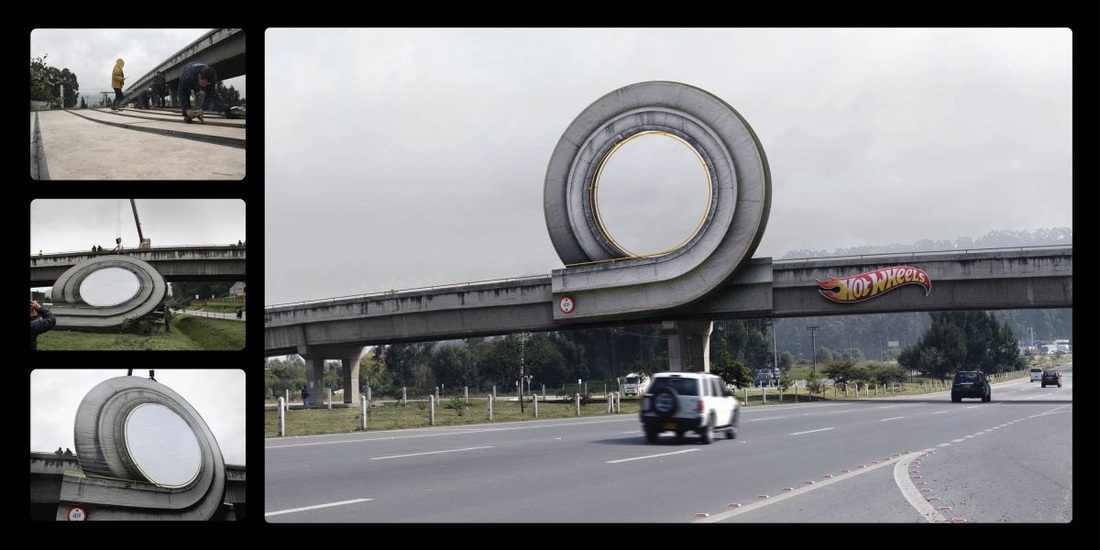Graphic design is a means of quickly communicating a message to an audience. To understand how much graphic designs affect us in our daily lives, do a few of the following:
All of the above -- although not a comprehensive list -- are just a few examples of how a graphic designer communicates to you without you realizing it.
A graphic designer can help you communicate a message. She can do it it quickly, she can even do it with no words, or she can do it with only words. The designer needs to understand how to use typography, color, illustration, photography, and copy to effectively transmit a client's message.
Let's take, for example, symbols. The symbols found at airports and train stations are international; they can be understood in all languages. You can travel from America to Germany and still know how to find a restroom. On a map, a symbol of a building is easily understood to be a hotel, and the fork and knife quickly tell you where you can get food. Symbols are one of the most powerful forms of communication! Symbols and maps are examples of Information Graphics. They quickly communicate important information to you.
Ads in newspapers, magazines, flyers, and billboards are usually a call to action. In these forms, a designer works with the client to capture your attention; stand out from competitors; and get you to buy a product, call for service, or call attention to a need. Many companies invest in marketing campaigns to further call attention to their product.
For example, when you hear the words, "Just Do It!", what image do you see? What about "Got Milk"? Does that bring an image to your mind? Why?
Logos help identify a company. They can inform the public about your company, or they can be memorable. Two red bullseye circles immediately make you think Target without even saying the name. The image speaks for itself. It's memorable, and you associate it with a supermarket or department store.
The educated graphic designer knows that sometimes words are not enough to get a message across. She knows how to use lines, shapes, color, space, balance, hierarchy, texture, typography, scale, and overall harmony to help get a message across. By studying a client's target audience and its competition, a graphic designer can speak to the observer quickly without the observer knowing the message was in subliminal form.
Designers have become increasingly clever in getting your attention. Take the shot of this billboard as seen from a highway.
- The next time you are at an airport, pay close attention to the international symbols and signs used: a female and male separated by a vertical line, a person in a wheelchair, a large P in a circle, directional arrows. Did you understand their meaning without the aid of words?
- When you arrive at your travel destination, pick up a local tourist map. Note the illustrations. Do your eyes flow effortlessly around the map? Does any one, particular area catch your attention more? Can you easily locate a hotel or place to have dinner?
- While you're driving down the highway, look at the billboards vie for your attention. What made you notice one over the other?
- Pick up a magazine at the doctor's office. Notice the photography or artwork and read the captions along the front. Flip through it and pay attention to the ads. Does one ad in particular make you look more closely and take note? Why?
- Go to a bookstore and look at the books as soon as you walk in. Are there any that peak your interest more than others as soon as you enter? Are you already judging a book by its cover?
- If a car has an apple sticker on its window, do you already know what company it represents?
All of the above -- although not a comprehensive list -- are just a few examples of how a graphic designer communicates to you without you realizing it.
A graphic designer can help you communicate a message. She can do it it quickly, she can even do it with no words, or she can do it with only words. The designer needs to understand how to use typography, color, illustration, photography, and copy to effectively transmit a client's message.
Let's take, for example, symbols. The symbols found at airports and train stations are international; they can be understood in all languages. You can travel from America to Germany and still know how to find a restroom. On a map, a symbol of a building is easily understood to be a hotel, and the fork and knife quickly tell you where you can get food. Symbols are one of the most powerful forms of communication! Symbols and maps are examples of Information Graphics. They quickly communicate important information to you.
Ads in newspapers, magazines, flyers, and billboards are usually a call to action. In these forms, a designer works with the client to capture your attention; stand out from competitors; and get you to buy a product, call for service, or call attention to a need. Many companies invest in marketing campaigns to further call attention to their product.
For example, when you hear the words, "Just Do It!", what image do you see? What about "Got Milk"? Does that bring an image to your mind? Why?
Logos help identify a company. They can inform the public about your company, or they can be memorable. Two red bullseye circles immediately make you think Target without even saying the name. The image speaks for itself. It's memorable, and you associate it with a supermarket or department store.
The educated graphic designer knows that sometimes words are not enough to get a message across. She knows how to use lines, shapes, color, space, balance, hierarchy, texture, typography, scale, and overall harmony to help get a message across. By studying a client's target audience and its competition, a graphic designer can speak to the observer quickly without the observer knowing the message was in subliminal form.
Designers have become increasingly clever in getting your attention. Take the shot of this billboard as seen from a highway.
When designing a billboard, graphic designers know drivers have only split seconds to look at a billboard. The designer must be able to communicate with the driver in that split second. Do you think the designer did a good job of doing this? Do you think a child riding in the car seeing this sign might want the parent to stop at a store to get Hot Wheels?
This is, indeed a very clever form of advertisement. Kudos to this designer!
Although you might think it's smart to do something yourself or let a friend quickly design something for you, it takes a smart designer using all the weapons at her disposal to do it right and communicate your message properly.
Next Time
Next time, please join me as I discuss how important branding is for your company.
Don't take this topic lightly!
This is, indeed a very clever form of advertisement. Kudos to this designer!
Although you might think it's smart to do something yourself or let a friend quickly design something for you, it takes a smart designer using all the weapons at her disposal to do it right and communicate your message properly.
Next Time
Next time, please join me as I discuss how important branding is for your company.
Don't take this topic lightly!


 RSS Feed
RSS Feed